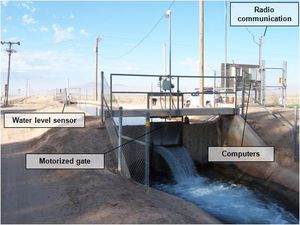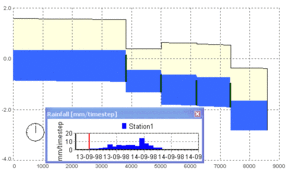Real-time Control
All water systems surrounding us need some sort of control, as we do not want rivers to flood us or water not be available for withering crops. Hence, societies have build structures, such as sluices, gates and pumps in water courses in order to direct water towards locations where they lead to the least problems or the water is needed the most. Other objectives for which water needs to be steered in certain directions are navigation, ecology, cooling water and ofcourse drinking water. The way the structures need to be operated is researched in the field of Real-Time Control. At www.canalcontrol.com/games.htma drainage or irrigation game can be played that illustrates control on a drainage or irrigation canal.
Real-time control implies the application of sensors to measure the present state of the water system, (tele-)communication lines, computers, prediction models and other high-tech equipment. This makes it a very modern way of trying to meet the demands of society, for example for flexible delivery of water to farmers in the United States (see picture) or for reducing the impact of an extreme storm event by using up as much storage as possible in the drainage canal (see movie).


Longitudinal profile of a drainage canal with 4 controlled gates with extreme storm event of September 1998.